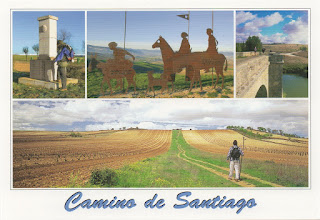The last years on the way to Portugal or on the way back to Switzerland I always try to go to a new UNESCO site. This year we stopped in Saint-Emilion. It has very beautiful monuments but it could be cleaner... The wine is absolutely great but very expensive. However, I couldn't waste the chance to taste it ;)
 |
| Saint-Emilion |
This postcard was sent by João Nogueira
Viticulture was introduced to this fertile region of Aquitaine by the Romans, and intensified in the Middle Ages. The Saint-Emilion area benefited from its location on the pilgrimage route to Santiago de Compostela and many churches, monasteries and hospices were built there from the 11th century onwards. It was granted the special status of a 'jurisdiction' during the period of English rule in the 12th century. It is an exceptional landscape devoted entirely to wine-growing, with many fine historic monuments in its towns and villages. - in: http://whc.unesco.org/en/list/932/
 |
| Saint-Emilion |
Saint-Émilion's history goes back to prehistoric times and is a UNESCO World Heritage Site, with fascinating Romanesque churches and ruins stretching all along steep and narrow streets.
The Romans planted vineyards in what was to become Saint-Émilion as early as the 2nd century. In the 4th century, the Latin poet Ausonius lauded the fruit of the bountiful vine.
The town, previously called Ascumbas, was renamed after the monk Émilion (d.767), a travelling confessor, who settled in a hermitage carved into the rock there in the 8th century. The monks who followed him started up the commercial wine production in the area.
 |
| Saint-Emilion |
Saint-Émilion is one of the principal red wine areas of Bordeaux along with the Médoc, Graves and Pomerol. The region is much smaller than the Médoc and adjoins Pomerol. As in Pomerol and the other appellations on the right bank of the Gironde, the primary grape varieties used are the Merlot and Cabernet Franc, with relatively small amounts of Cabernet Sauvignon also being used by some châteaux.
 |
| Saint-Emilion |
Saint Émilion wines were not included in the 1855 Bordeaux classification. The first formal classification in Saint-Émilion was made in 1955. Unlike the 1855 classification, it is regularly revised. - in: wikipedia





































